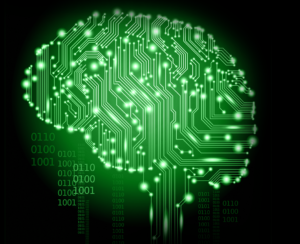
The recent 60 Minutes segment on “Artificial Intelligence” was another exciting highlight of the rapidly evolving world of Artificial Intelligence (AI). While highlighting a number of exciting advances in narrow AI, as well as reporting on concerns related to general AI, the entertaining news article lacked the time and depth necessary to delve into some of the important aspects of AI’s current status -what it can and cannot do and where it is going. I would like to take this opportunity to clarify a few of these aspects.
As a concept, AI is about developing the technologies, processes, and methodologies which will allow computer systems to perform human-like reasoning, planning, and interaction across all domains. In the science sense, AI is about a family of scientific disciplines which are all working on aspects of the General Artificial Intelligence challenge. These disciplines include neural networks, genetic algorithms, planning, voice recognition, cognitive modeling, and many more.
Oftentimes, people get AI-related terms intermixed. For example, Deep Learning is a new class of neural networks, and neural networks are a discipline of AI. Frequently, writers use AI synonymously with Deep Learning. That is not, strictly speaking, correct. Deep Learning is a subset of AI, but AI is more than just Deep Learning. Given the complexity of AI concepts and technology, this kind of error is understandable. It may be useful to think of AI as a large and complex puzzle, requiring the completion of many individual challenges along the path to total completion.
Deep Learning is a subset of AI, but AI is more than just Deep Learning.
But making progress, even in several key areas, does not solve the greater AI problem. Consider a large, thousand-piece puzzle of a cityscape. Just because we got a handful of pieces to fit together to form a clear picture of one or two buildings, does not mean we have the puzzle solved so we can see the entire city. Recent accomplishments in AI do mean we are making progress, but it remains unclear whether that progress means we are 5-years, 10-years, or 50-years away from solving the entire puzzle.
It is very exciting to see that many of the difficult pieces of the General Artificial Intelligence problem are seeing major advancements. These include vision, speech recognition, text understanding, and others. It is sometimes deceiving though, because intense work has been going on in these areas for decades. Recent advancements in computing power, new techniques, and heavy investment have highlighted and accelerated that progress. Even so, these improvements are not ‘overnight success stories,’ but rather, examples of technologies that have reached Gladwell’s Tipping Point.
AI-related challenges that CSI is focusing on include planning and deep situational meaning. These are two areas where there is still much work to be done. It is one thing to tell a computer a problem and have it understand the words, but it must also understand the meaning of those words in context and then be capable of using that meaning and its ability to analyze, reason, and plan to develop a viable solution to the problem. Even then, there is still the issue of executing the proposed solution and determining if it indeed met the objective of solving the problem.
It is one thing to tell a computer a problem and have it understand the words, but it must also understand the meaning of those words in context and then be capable of using that meaning and its ability to analyze, reason, and plan to develop a viable solution to the problem.
When the problem is something like the two dimensional board game ‘go,’ – a complex but cleanly bounded problem – today’s AI is up to the task. However, when the problem is planning an organizational structure for a new division or managing a fleet of vehicles delivering pizzas in a city or developing a corporate marketing campaign – conquering the associated complexity through AI is still beyond our grasp.
While we will be first to herald the power of AI to solve well-defined sets of complex problems – what most refer to as Narrow AI – it is important to understand the realistic limitations of those solutions. In time, the technology will get there – and we hope our ActiveEdge® Agent technology will be a part of that larger solution.
 About the Author: Dr. Todd Carrico is the President and CEO of Cougaar Software, Inc. and a recognized expert in cognitive computing and intelligent distributed systems.
About the Author: Dr. Todd Carrico is the President and CEO of Cougaar Software, Inc. and a recognized expert in cognitive computing and intelligent distributed systems.